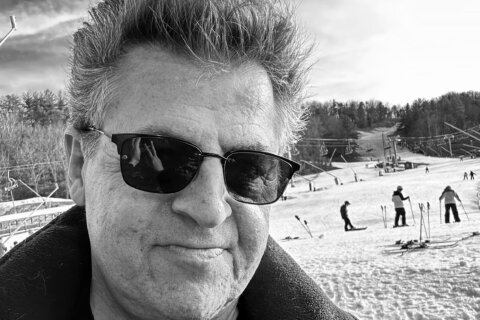Post by @nealaugensteinView on Threads
My post-lobectomy dry cough is almost gone. The next step in my recovery from stage 4 lung cancer is to learn how to breathe more efficiently, since I’m down a lobe.
Thursday, I had my first pulmonary rehabilitation session. I’ve gotta tell you, it felt nice to break a sweat, and give my cancer-free (at least for now) lungs a good workout.
You’ll remember in November 2022, I was diagnosed with stage 4 lung cancer, with malignant lesions and lymph nodes in both lungs. In April of this year, my doctors told me I had no evidence of cancer, after five months of one-pill-a-day targeted therapy, and a robot-assisted lobectomy to remove the upper lobe of my left lung.
Since surgery, I’ve been feeling great — essentially living the same life I lived since I started my targeted therapy in December. Working every day from 4 a.m. to noon, taking an hour nap and family errands, chores and fun.
I’ve just had two causes for minor concern: I’ve had a mild dry cough that my surgeon said was very common after lung surgery, and would continue to improve. Now, it’s almost gone.
And, back in June, when covering a story on drought monitoring on the Potomac River, I noticed I was having to really work to get enough breath after climbing a short, but steep, incline from the river up to the C&O Canal.
With the combination of less lung capacity, and exercise that hasn’t been more strenuous than a two-mile walk with our dogs, it felt like the right time to get a bit more in-shape. And, my oncologist agreed.
My introduction to pulmonary rehabilitation
When I made my first appointment, I learned rehab would be twice a week, for nine weeks. Each session is about 90 minutes.
During my initial assessment, I was asked a bunch of questions about my overall health and whether different scenarios prompted shortness of breath. Then, I was asked to walk as far as I could on a small indoor track, in the span of six minutes, while wearing a monitor that checks my oxygen saturation, since the body needs a certain level of oxygen in the blood to function well.
Another test was to sit on the edge of a chair, then see how long it takes to stand up and sit down five times, without using my hands to push myself up off the arms of the chair.
I was a little tentative, worried knee surgeries would make it impossible to stand up without pushing myself up. My time of 16 seconds was above the goal of 13 seconds, but my clinician pointed out I proved to myself I could do it, and would likely do it faster next time.
The next day was my first rehab session, in what looks like any modern gym, with cardio machines and weights. While it’s in a small group setting, each person works on their own exercises as the clinician circulates and jots notes on each patient’s chart.
Since this was my first session, I learned how to use the machines and what to look for on the digital displays, in terms of meeting my goal of giving my lungs a workout.
I started with a five-minute warmup on the treadmill, then tweaked the speed so I was walking fast enough to break a sweat, but not so fast I had to struggle to keep up.
After each exercise, I’m showed a chart which asks me to gauge my dyspnea — shortness of breath. Then, the laminated chart is flipped over, and I gauge my exertion, with the goal of feeling like I’m getting a good workout, without it being too difficult.
In my first workout, I never felt short of breath and could have upped the intensity considerably. My clinician says next time we’ll add some incline on the treadmill, do some weight training and learn the rowing machine, for a good total body workout.
The big picture
I saw my oncologist earlier in the day and my monthly blood work all looks great, in terms of how my body is handling my targeted therapy for my particular mutation of cancer. The drug is called osimertinib.
I’m enthusiastic about getting more exercise and improving my breathing. And, I assume it’ll help me shed some of those pounds I gained from all those comfort foods after my diagnosis.
In August, we’ll schedule my next CT scan, brain MRI and PET scan — all screening tests that can show any suspicious activity throughout my entire body. They are sensitive enough to find minuscule changes, which would provide my oncologist with information to plug in to plans for my future treatment.
My buddy (and until recently, WTOP colleague) Rick Massimo did a really nice feature in the latest edition of Northern Virginia magazine on my lung cancer journey. Not surprisingly, I thought he did a beautiful job of highlighting that I’m benefiting from some of the huge advances in cancer treatments.
The article is entitled “Lucky to Be Living.” And, I couldn’t agree more.
Everyone’s excited to hear the beautifully written article that just came out in @NorthernVAMag about my #lungcancer journey. The headline is “Lucky to Be Living.” I certainly agree. pic.twitter.com/1aovDGbegM
— Neal Augenstein (@AugensteinWTOP) July 26, 2023







